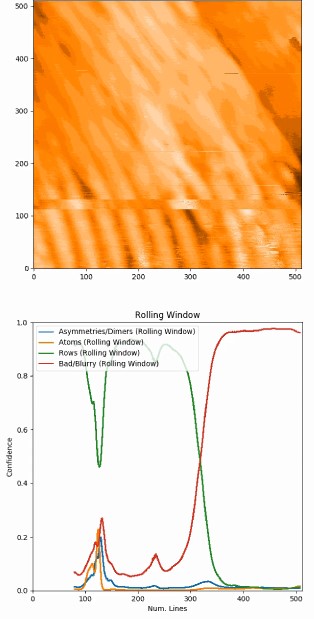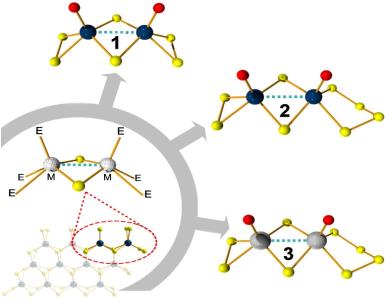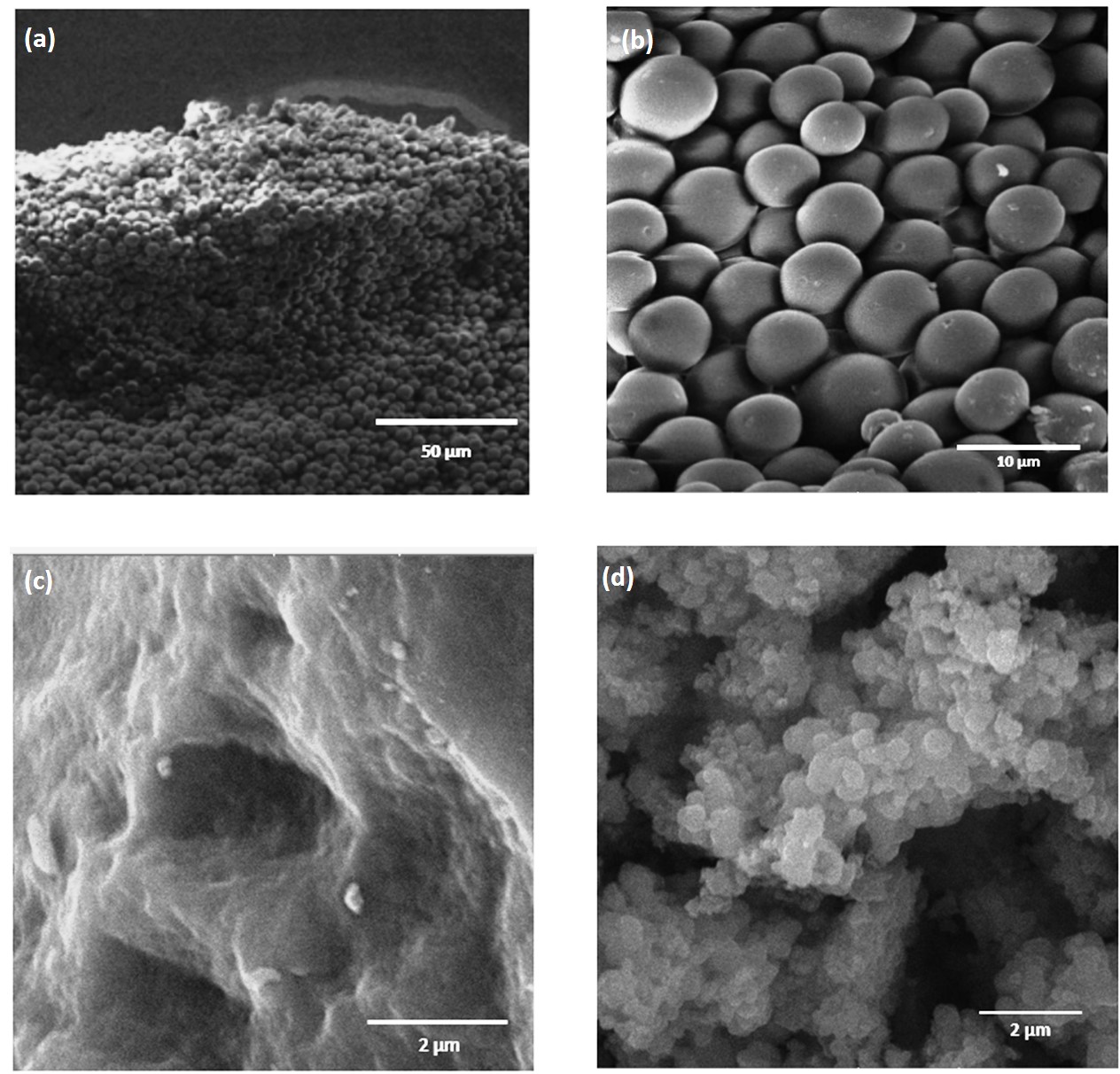Long wavelength lattice dynamics in morphotropic PbZrxTi1-xO3: the road to large scale electronic structure calculations
1*Jack S. Baker, 1David R. Bowler
1 The London Centre For Nanotechnology (LCN), University College London (UCL), Gower St, London, The United Kingdom
The PbZrxTi1−xO3 (PZT) solid solution can be regarded as a randomly ordered isovalent B-site substituted compound in a matrix of either of the two phase diagram end members PbTiO3 (PTO) or PbZrO3 (PZO). The former is a prototypical ferroelectric (FE) with P4mm symmetry whilst the latter, though still topical, is considered an antiferroelectric (AFE) with Pbam symmetry. These observations are supported using the soft-mode theory of lattice dynamics by considering the symmetry (and energy) lowering distortions of a high symmetry cubic phase as indicated by imaginary frequencies at certain wavevectors in the phonon spectrum. It is most common to study PZT around x ≈ 0.52 in the region near the morphotropic phase boundary (MPB). This is a compositional boundary with complex lattice dynamics where a flat energy surface for polarisation rotation exists between the ferroelectric tetragonal (P∥[001]) and rhombohedral (P∥[111]) phases via intermediate monoclinic phases. It is this process which is thought to bring about the giant electromechanical response of the material which has long been exploited for use in ultrasonic transducers ceramic capacitors and actuators. More recently, it has been suggested for use in piezoelectricity-induced room temperature superconductors for the potential generation of a supercurrent along a metal/piezoelectric interface.
Using density functional perturbation theory (DFPT), it is found that for some arrangements of PZT that single, long wavelength modes of a dual antiferrodistortive & antipolar character are competitive in their instability with more commonly considered zone centre/boundary modes (e.g. Ferroelectricity and Glazer-type rotations of the BO6 octahedra). Although the eigenvectors of the distortion are available via the plane-wave DFPT calculation, due to the long wavelengths of the distortions, many thousands of atoms are required to find the resulting stable structure and to explore its energetics. Such calculations are of extraordinary computational expense and even intractable for conventional plane-wave based methodologies due to well-known O(N3) scaling in compute time where N is the number of atoms in the simulation.
Along with a full comparative study of the lattice instabilities of PTO, PZO and PZT, we evaluate the applicability of large scale electronic structure calculations to study the long wavelength distortions using compact basis sets of pseudoatomic orbitals (PAOs) as implemented in the CONQUEST code. We find that even for basis sets of a modest size, the method is able to accurately reproduce the phase transition energies and stable structures predicted by plane-waves. Since our findings suggest that our method is applicable even for the fine, shallow energy surfaces of the perovskite-oxides, this method could pave the way for a new paradigm for first principles calculations in a diversity of nanosystems.
The use of gold nanoparticles as novel photodynamic cancer therapy sensitizers
1*Broadbent, M.D., 1Brust, M., 1Volk, M.
1Department of Chemistry, University of Liverpool, Liverpool, L69 3BX, United Kingdom
Gold nanoparticles (AuNPs) provide a new and exciting tool in cancer diagnosis and therapy. Their unique surface and optical properties can provide significant improvements over conventional treatments. Photodynamic therapy (PDT) combines a photosensitizer and light to generate reactive oxygen species within a tumor to destroy the cancer. It can provide exceptional dual selectivity as only cells which contain the photosensitizer and are exposed to light are damaged.
The use of AuNPs as a photothermal agent has been researched extensively, however this approach fails to utilize the photochemical properties of AuNPs, and due to fast heat diffusion it may also kill surrounding cells which do not contain AuNPs. Upon irradiation with light AuNPs have been shown to generate singlet oxygen – a key active species in photodynamic therapy [J Phys Chem C 120 (2016) 10647]. This could make them an ideal photosensitizer which, combined with the modifiable surface chemistry of AuNPs and their high stability against enzymatic degradation could provide a photosensitizer that overcomes many limitations of PDT using traditional photosensitizers.
This study shows that cells containing AuNPs can be killed upon irradiation with 532 nm light in conditions that are below the required heating levels to cause cell death via a photothermal route. The characteristics of cell death in these non-photothermal conditions provide significant clinical advantages over the use of AuNPs in photothermal conditions and, combined with active targeting, could provide a cancer therapy with exquisite selectivity towards cancerous cells.
This work not only shows that AuNPs are a promising sensitizer for photodynamic therapy, but also that in their application as photothermal agents gold nanoparticles generate significant amounts of reactive oxygen which is masked by the photothermal mechanism.
Chiral metamaterials for biological sensing: the role of optical chirality and interference.
1*Gilroy, C., 2Hashiyada, S., 3Endo, 1K., Karimullah, 1A.S., Barron, L.D., 2Okamoto, H., 3Togawa, Y., 1Kadodwala, M.
1 School of Chemistry, Joseph Black Building, University of Glasgow, Glasgow, G12 8QQ.
2 Institute for Molecular Science and The Graduate University for Advanced Studies (Sokendai), 38 Nishigonaka, Myodaiji, Okazaki, Aichi 444-8585, Japan
3 Department of Physics and Electronics, Osaka Prefecture University, Sakai 599-8570, Japan
*c.gilroy.1@research.gla.ac.uk
Chiral plasmonic nanostructures enable the sub-pg detection and characterization of biological materials. The sensing capabilities are associated with the chiral asymmetry of the near fields, which locally can be greater than equivalent circularly polarized light, a property referred to as superchirality.
However, sensing abilities do not simply scale with the magnitude of superchirality. We show that chiral molecular sensing is correlated to the thickness of a nanostructure. This observation is reconciled with a previously unconsidered interference mechanism for the sensing phenomenon. It involves the “dissipation” of optical chirality into chiral material currents through the interference of fields generated by two spatially separated chiral modes. The presence of a chiral dielectric causes an asymmetric change in the phase difference, resulting in asymmetric changes to chiroptical properties. Thus, designing a chiral plasmonic sensor requires engineering a substrate that can sustain both superchiral fields and an interference effect.
Real Time STM Tip State Recognition Using Neural Networks
1*Gordon, O.M, 1D’Hondt, P., 2Knijff, L., 2 Freeney, S.E., 1Junqueira, F.L.Q., 1Moriarty, P.J, 2Swart, I.
1
School of Physics & Astronomy, The University
of Nottingham, UK
2 Debye Institute for Nanomaterials Science, Utrecht University,
Netherlands
*oliver.gordon@nottingham.ac.uk
One of the most frustrating and time-consuming challenges facing scanning probe microscopists is the constant need to detect and correct flaws of the scanning tip apex. While atomically sharp tips can be created ex-situ [1], imperfections such as blunted or “double” tips change images non-linearly, resulting in a variety of image artefacts. Furthermore, different atomistic image resolutions/states can also be seen, depending on the specific surface being observed [2]. Indeed, certain tip shapes may be desired for tasks such as imaging, but not for atomic manipulation, for example. Accounting for all these factors is a manual, frustrating process that would benefit greatly from automation, despite the relative lack of historical attempts to do so (most notably Rashidi et al, 2018)[3].
Here, we demonstrate a convolutional neural network protocol that enables highly performant state recognition with H:Si(100), Au(111) and Cu(111). We correctly distinguish the full set of tip states specific to the surface, but do so with even greater performance when distinguishing surface-specific tip states from general visual artefacts. Furthermore, we also extend this system to accurately assess live data in real-time by considering individual linescans and methods analogous to video classification. We find in certain cases that this particular method improves performance, whilst requiring less data to make an assessment.

Figure 1: Demonstration of real-time assessment on a H:Si(100) surface (imaged top). The network initially sees visually distinct “rows” (bottom green), before a discontinuous tip change results in the tip changing to a show generic “blurry defects” (bottom red)
[1] M. Rezeq, J. Pitters, and R. Wolkow, Journal of Chemical Physics 124, 204716 (2006)
[2] A. Sweetman, et al, Beilstein Journal of Nanotechnology, 3, 25, (2012)
[3] M. Rashidi and R.A. Wolkow, ACS Nano (2018)
First principles modeling of an-isotropic thermoelectric materials
1*Alban d’Harcourt, A.H., 2Matt Probert, M.P., 3Phil Hasnip, P.H.
1/2/3 Department of Physics, University of York, York, England
We present a theoretical analysis of arsenic telluride using various theories pertaining to electrical and thermal transport properties. The objective is to develop a general method for evaluating thermoelectric properties of any material. The work was performed using computational models based on fundamental principals of quantum mechanics, whilst accounting for complexities such as layering or anisotropy. Important challenges have included the computational cost of modelling complex materials like arsenic telluride, and ensuring that the method is sufficiently general that it can cope with arbitrary material complexity.
Tuning Metal Chalcogenide Molecular Catalysts for the Hydrogen-Evolution Reaction: Electronic Effects and Mechanistic Insights
James McAllister,a Nuno A. G. Bandeira,b Jessica C. McGlynn,a Alexey Y. Ganin,a Yu-Fei Song,c Carles Bob and Haralampos N. Mirasa
(a) WestCHEM, School of Chemistry, University of Glasgow, Glasgow, G12 8QQ, UK.
(b) Institute of Chemical Research of Catalonia (ICIQ), The Barcelona Institute of Science and Technology, Avgda. Països Catalans 16, 43007 Tarragona, Spain.
(c) Beijing Advanced Innovation Center for Soft Matter Science and Engineering, State Key Laboratory of Chemical Resource Engineering, Beijing University of Chemical Technology, 100029 Beijing, P. R. China.
j.mcallister.1@research.gla.ac.uk
The production of hydrogen through water splitting using earth-abundant metal catalysts is a promising pathway for converting solar energy into chemical fuels. However, existing approaches for fine stoichiometric control, structural and catalytic modification of materials by appropriate choice of earth abundant elements are either limited or challenging. One promising strategy is the design of molybdenum sulfide nanoclusters which mimic the catalytically active sites found in MoS2. These molecules have the unique property of exposing a high degree of active edge sites leading to improved catalytic activity. Here, we explore the implementation of new design principles for the development of efficient molecular HER catalysts. In this work, we prepared [Mo2O2(μ-S)2(S2)2]2–, [Mo2O2(μ-S)2(S2)(S4)]2– and [W2O2(μ-S)2(S2)(S4)]2– by wet-chemical methods and investigated their HER electroactivity.
Specifically, we aim to investigate the effects of stoichiometric and structural control resulting from the appropriate choice of the chalcogen elements and their ratio (e.g. O2-/S22-, O2-/S22-/S42-) within the coordination sphere of earth abundant transition metals (e.g. Mo or W). We evaluate the performance of these molecular catalysts for the hydrogen evolution reaction while we propose potential mechanistic pathways in relation to the interaction between catalysts and substrate.
The employed design principles offer the opportunity to bridge the gap between molecular and solid-state heterogeneous catalysts when immobilized on a carbon electrode surface. These molecular species represent an exciting class of low-cost earth-abundant materials and display great promise as HER electrocatalysts. Both molybdenum-based catalysts were shown to be exceptionally active towards the HER, with a reported overpotential of just –114 ± 3 mV (at j = 10 mAcm–2) and no catalyst degradation over 1000 cycles. Density functional calculations reveal the effect of the electronic and structural features and confer plausibility to the existence of a unimolecular mechanism in the HER process based on the tested hypotheses. We anticipate these findings to be a starting point for further exploration of molecular catalytic systems.

Figure 1. Ball-and-stick representation of: (A) [Mo2O2(μ-S)2(S2)2]2– (1), (B) [Mo2O2(μ-S)2(S2)(S4)]2– (2) and (C) [W2O2(μ-S)2(S2)(S4)]2– (3). Where M: Mo or W and E: chalcogen atom. Colour code: Blue, Mo; Grey, W; yellow, S; red, O
Nano-colloids to understand the nature of the glass transition
1*Ortlieb, L., 1,2Hallett J.E., 1Turci, F., 3Ingebrigtsen, T.S. 1,4,5Royall, C.P.
1 H. H. Wills Physics Laboratory, Tyndall Avenue, Bristol, United Kingdom
2 Department of Chemistry, Physical and Theoretical Chemistry Laboratory, University of Oxford, Oxford OX1 3QZ, United Kingdom
3DNRF Centre “Glass and Time“ , IMFUFA, Department of Science, Systems and Models, Roskilde University, Postbox 260, DK-4000 Roskilde, Denmark
4School of Chemistry, University of Bristol, Cantock’s Close, Bristol, United Kingdom
5Centre for Nanoscience and Quantum Information, Tyndall Avenue, Bristol, United Kingdom
The glass transition has been described as “the deepest problem in solid state physics” ([P.W. Anderson [1]). Here we show how insight into this longstanding challenge may be obtained through the use of nanotechnology, specifically super-resolution “nanoscopy” of nanoparticles. The challenge of the glass transition is that, fundamentally, the reason for solidification of a liquid in the absence of crystallisation is not understood, and competing, mutually exclusive theories give equally good descriptions of the experimental data available [2]. There is thus an urgent need for better experimental data, and in particular higher-order correlations than pairwise have been identified as a key requirement to unravel the challenge of the glass transition [3].
Such higher-order data requires measurement of the coordinates of the constituent particles or molecules, which is not possible for molecular glassformers, but has been achieved for mesoscopic colloidal glassformers [4]. However, mesoscopic colloids have dynamics that are so slow that the physics of the glass transition is not captured [2,3], so to truly understand this problem we need to use particles that are almost as small as molecules, ie nanoparticles. Our first steps in this direction have revealed deep insight into the role of fivefold symmetric structures such as icosahedra and the role of configurational entropy [5]. Here we probe a deeper question as to the nature of interfaces between co-operatively re-arranging regions.
[1] Anderson, P.W. “Through the glass lightly.” Science 267.5204 (1995): 1618-1618.
[2] Berthier, Ludovic, and Giulio Biroli, Reviews of Modern Physics 83.2 (2011): 587.
[3] C. P. Royall and S.R. Williams Phys. Rep., 560:1-75, 2015
[4] Ivlev, A., Hartmut, L. Ã., Morfill, G., & Royall, C. P. (2012). Complex plasmas and colloidal dispersions: particle-resolved studies of classical liquids and solids (Vol. 5). World Scientific Publishing Company.
[5] J. E. Hallett, F. Turci, and C. P. Royall, Nature Comms., 9:3272, 2018
TiO2 based Nanocomposite Hydrogel for Solar Disinfection
Anam A. A Safri*, Ashleigh J. Fletcher, Leo Lue
University of Strathclyde, Glasgow, UK
Sol-gel chemistry was adeptly exploited to fabricate nanocomposite gels for solar disinfection to render clean drinking water, especially in the developing countries. The present research is a novel approach to acquire potable water by improving the adsorption or catalysis through exploiting the synergistic effect of three different notions; the high surface area and controlled porosity of xerogels, immobilization of photocatalytic Titanium dioxide (TiO2) nanoparticles and red shift of absorption edge alongside high electron transport properties of carbon. The characterization and analysis through UV-Vis spectroscopic studies concluded the reduction in the bandgap (from 3.2 eV to 2.9 eV) of TiO2, hence, these nanocomposites possess light absorption ability in the visible region of the electromagnetic spectrum. Moreover, the morphology examined through FESEM and chemical linkages through FTIR confirmed the predicted profiles. Finally, the SBET for surface area analysis and the reduction in dye concentration over time, validated that these nanocomposites are potential disinfectants for the antimicrobial activity due to large surface area for maximum absorption of organic pollutants. Noteworthy advantage of these nanocomposites is the green synthesis approach and this disinfectant can be sequentially used efficiently for several number of cycles.
Keywords; Antimicrobial; Water; Disinfection; Hydrogel; TiO2 Nanocomposites; Green synthesis

Figure 1. FESEM images of (a), (b), (d) nanocomposite hydrogel, (c) pristine hydrogel